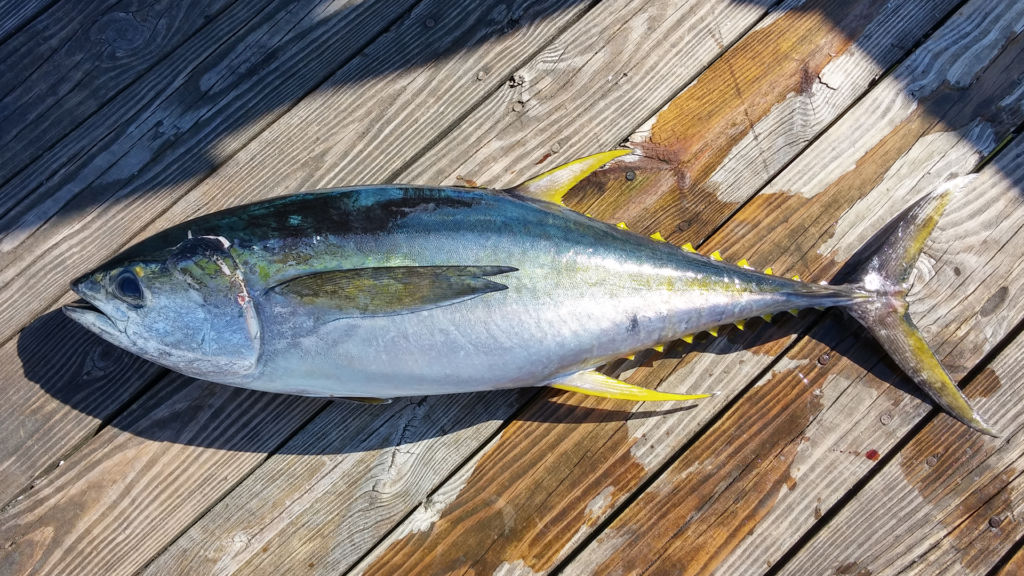

Common names for Tuna
Yellowfin tuna, Pacific yellowfin, ahi (Hawaiian), “light-meat” tuna
Other languages for Tuna
- French name: Albacore
- Italian name: Tonno albacora
- German name: Gelbflossenthun
Introduction to Tuna
As the name suggests, yellowfin tunas are distinguishable from other tunas by a large, bright-yellow dorsal fin and a yellow stripe running down their sides. Additionally, it is more slender than bluefin. The yellowfin tuna’s bright markings make it particularly striking at night. Fishermen say that when watching yellowfin eat, it’s clear to understand why they’re called ahi, or fire, in Hawaiian. Yellowfin tuna is the most tropical tuna species, found in warm seas across the Pacific and Atlantic, often combined with other species, particularly skipjack tuna. Although the fish is most often taken using a purse seine, the best-quality yellowfin is captured on a hook and line. The market size ranges between 7 1/2 and 20 pounds. Fresh yellowfin tuna of the highest quality is sourced from Hawaii, Florida, Mexico, southern California, and the Gulf of California. Tuna is often canned in countries other than those where it is harvested. Thailand, the Philippines, and Indonesia are the top tuna canning nations exporting to the United States.
Product profile for Tuna
Yellowfin tuna has a mild, meaty flavor, comparable to swordfish, according to some. It has a richer flavor than albacore but is thinner than bluefin tuna. The flesh is brilliant red while raw but becomes brown to grayish-tan when cooked, firm and juicy with big flakes. Yellowfin tuna is also available as sashimi and sushi. Canned light-meat tuna is somewhat darker than canned albacore tuna and is frequently mixed with skipjack tuna. Look for tuna that has a shiny, moist appearance. Bright transparent red is excellent. Fat is desirable because it adds taste to the dish.
Cooking tips for Tuna
Yellowfin is delicious raw, but cut steaks 1 1/2 inches thick for grilling and broiling. The tuna only requires a little brushing of olive oil and a sprinkling of spice. Remove the black lateral line from the flesh for a softer flavor. Tuna may be marinated for a long time without getting “cooked.” Before grilling, marinate the chicken in white wine, oil, and brown sugar for an hour or two.
Nutrition facts for Tuna
Calories: 108 Fat Calories: 8.1 Total Fat: 0.9 g Saturated Fat: 0.2 g Cholesterol: 45 mg Sodium: 37 mg Protein: 23.4 g Omega 3: 0.2 g
Primary product forms for Tuna
Fresh: H&G, Chunks, Loins, Steaks Frozen: H&G, Chunks, Loins, Steaks Value-added: Canned, Pre-marinated steaks, Smoked strips and jerky, Sashimi, Burgers (patties)
Global supply for Tuna
France, Indonesia, Japan, Mexico, Philippines, South Korea, Spain, Taiwan, United States, Iran